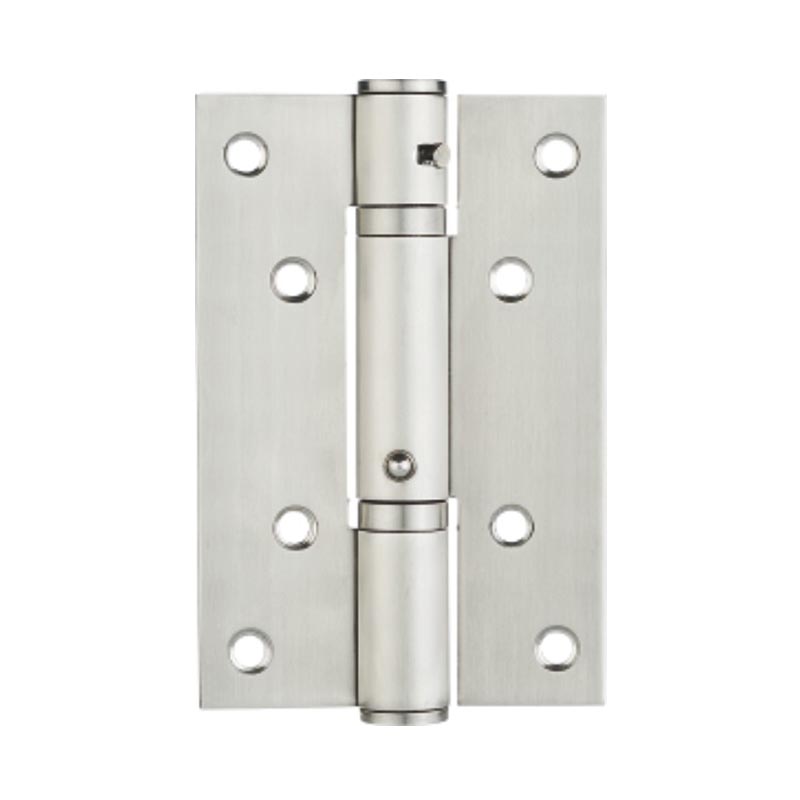Surface treatment plays a crucial role in enhancing the performance and lifespan of Multi-Function Hydraulic Hinges. These hinges are often exposed to daily wear, moisture, and varying environmental conditions, which can cause corrosion, rusting, and surface wear over time. Proper surface finishing, such as coating, plating, or anodizing, not only improves aesthetic appeal but also significantly boosts the hinge’s resistance to mechanical and chemical degradation. Understanding how different surface treatments affect durability is vital for manufacturers and end-users seeking long-lasting performance.

Powder coating is widely used on hydraulic hinges to provide a protective layer that resists moisture, abrasion, and minor impacts. This type of coating forms a uniform, hard surface that shields the metal from environmental factors that can cause corrosion. It also reduces the friction between moving parts, which enhances the hinge’s smooth operation. The thickness and quality of the powder coating determine its effectiveness, as a well-applied layer can prevent rust formation even in humid or coastal areas.
Electroplating involves depositing a thin layer of metal, such as nickel, chrome, or zinc, onto the hinge surface. This layer serves multiple purposes: it protects the base metal from oxidation, increases surface hardness, and provides an aesthetically pleasing finish. In addition to preventing corrosion, electroplating reduces wear caused by repeated opening and closing of the hinge. High-quality electroplating ensures uniform coverage, which reduces weak points where rust could start, thereby extending the operational life of Multi-Function Hydraulic Hinges.
For hydraulic hinges made from aluminum or aluminum alloys, anodizing is a preferred surface treatment. Anodizing converts the metal surface into a durable oxide layer, which is highly resistant to corrosion and abrasion. This layer also improves adhesion for paint or other finishes and provides good protection against environmental degradation. Unlike coatings that may chip or peel, anodized layers are integral to the metal, offering long-term stability and protection for hinges subjected to outdoor or high-humidity environments.
Surface treatments not only enhance corrosion resistance but also improve the mechanical performance of hydraulic hinges. Smooth and hardened surfaces reduce friction between moving parts, ensuring consistent damping and smooth operation. They also reduce micro-abrasion caused by metal-to-metal contact, preserving the precision of the hydraulic mechanism. By reducing the risk of surface degradation, treatments help maintain the hinge’s operational reliability over thousands of opening and closing cycles.
While surface treatments significantly improve hinge durability, proper maintenance is still important. Regular cleaning, lubrication, and inspection prevent the accumulation of dirt and moisture that could compromise protective layers. Choosing the appropriate surface treatment based on the intended environment—such as powder coating for indoor use or anodizing for outdoor applications—further extends the service life of Multi-Function Hydraulic Hinges and ensures consistent performance.
Surface treatments such as powder coating, electroplating, and anodizing play a critical role in enhancing the corrosion resistance and wear performance of Multi-Function Hydraulic Hinges. Each method offers unique advantages depending on the base material, environmental exposure, and operational demands. By applying the correct surface treatment and following proper maintenance practices, manufacturers can produce hydraulic hinges that deliver long-lasting durability, maintain smooth operation, and resist rust and wear even under challenging conditions. Investing in high-quality surface finishing ultimately ensures the reliability, safety, and longevity of hydraulic hinge applications in both residential and industrial settings.